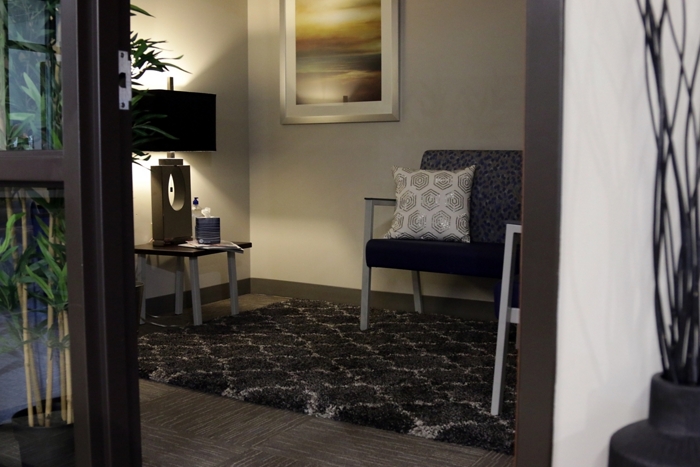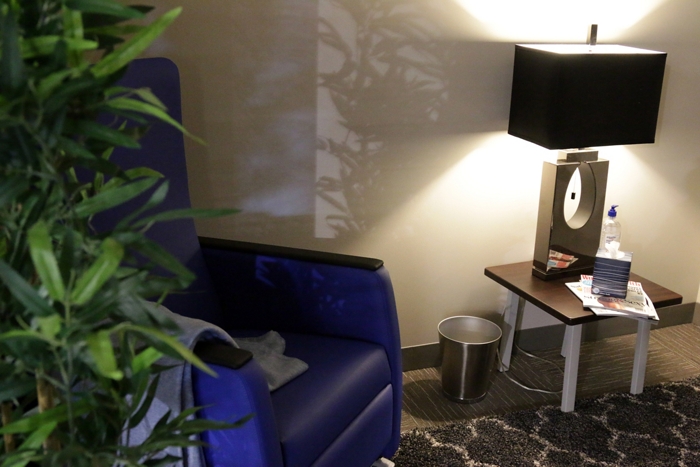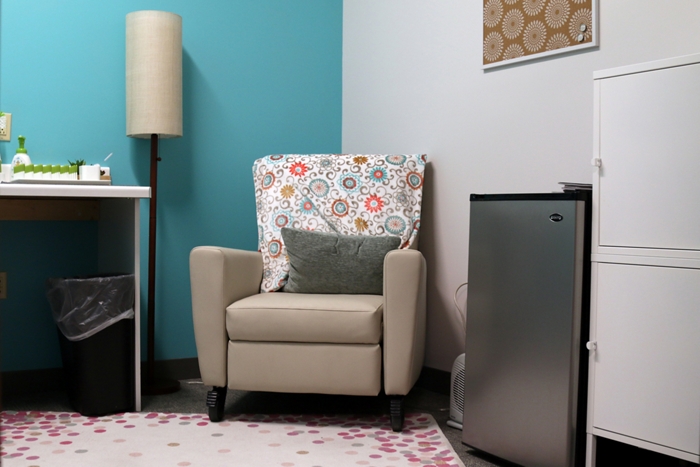There’s no doubt that wellness spaces are important. Tonya Dybdahl shares some helpful tips for how to effectively implement them in the workplace.

Whether it’s workplace stressors or outside forces, employees’ personal needs can’t always wait until the end of the business day. According to a Happiness in the Workplace study conducted by Kelton Global, nearly half of employees say that not having a private space would impact their frame of mind. That’s why adding a dedicated room for personal wellness can ensure that, even during a challenging day, employees can find space to privately work through their needs.
Today, wellness spaces, such as specialized rooms for breastfeeding mothers, have become a growing trend in office design. Tailored amenities elevate these spaces from the federally-mandated minimum and provide a comfortable, holistic environment that increases morale and inspires a positive culture.
A Wellness Room of One’s Own
Happiness and healthiness are irrevocably tied to one another. Ensuring employees feel their best and can perform at full speed is integral to a company’s success, and providing the right amenities can make all the difference. Whether it’s the sudden onset of a migraine, a bout of nausea during pregnancy, or the result of an overwhelming experience, a chance to get away from your desk and sit quietly is invaluable.

Differing from an unused conference room or spare office, a wellness room mimics the cleanability and durability of a healthcare environment while emphasizing calming, relaxing color palettes and fixtures that can improve mental and physical health. Comprehensive and thoughtful design ensures that employees can get the most benefit from their time in a wellness room:
- Choose a discrete, out-of-the-way location where employees won’t feel any pressure or judgment when they need to use the wellness room. Size-wise, a room no smaller than 9×9′ is ideal, so long as it can accommodate the furniture you choose for the space.
- Wellness rooms are for both physical and mental health, so they should remain somewhat sterile and easy-to-clean while inspiring calm and comfort. Ensure that all surfaces can be wiped down and that smaller items can be disposed of and replaced to promote cleanliness. Choose laminates surfaces and polyurethane upholsteries that deviate from clinical and hospital-like looks without sacrificing function.
- At minimum, every wellness room should include a recliner, however an ideal space will include a longer sofa or bench that allows employees to lay down. A simple end table or coffee table will suffice, providing space for a glass of water or health and wellness-focused magazines that can be easily replaced as they become weathered and germ-filled. Consider adding a second, smaller chair, just in case an employee would like a supportive colleague or friend in the room with them.
- Indirect lighting sources are key and natural light should be avoided or completely blocked, especially as migraines and photosensitivity-causing headaches are a primary use of wellness rooms. Total control of lighting is incredibly important so use upward-facing light fixtures or gentle lamps for as-needed lighting with every source controlled by dimmer switches.
- Paint color and artwork sets the tone for the space. Neutral tones that aren’t too dark and aren’t too light should be used; a taupe or bluish-gray is ideal. Avoid yellows and greens, as they can make people feel queasy, and red, as it inspires anger and increased energy. Artwork should be simple, serene, and relaxing.
- Provide amenities, when possible, and consider the many small things that can make a difference during a difficult time. Tissues, hand sanitizer, water bottles, and a small first aid kit are necessities. An emergency phone, and neutral snacks provide added benefit as well. Ensure that your trash can has a closed lid, just in case an employee becomes particularly nauseous.
- Nobody can anticipate a sudden illness or crisis, so these rooms should not be available to book on a shared calendar. While it is also important to put a discrete “occupied” indicator on the outside of the door, they should not lock, and employees should be encouraged to tell a trusted coworker to check up on them if they’re gone for a significant amount of time.

A Holistic Space for New Mothers
Today, mothers are the fastest growing segment of the U.S. workforce [1] and one-third of working mothers return to their jobs within three months of the birth of their child. [2] These new mothers face postpartum responsibilities that extend beyond maternity leave and the right accommodations can make the transition to work comfortable and easy, even when life at home becomes more hectic. While it is often overlooked, office design becomes more important than ever for breastfeeding and pumping moms who need time and space to themselves.
Beyond corporate common courtesy, the Fair Labor Standards Act (FLSA) requires the accommodation of breastfeeding mothers in the workplace. Furthermore, state laws often ensure greater accommodations in private and public spaces, however it is the FLSA that champions mother’s rights at work.
Under this law, employers are simply required to provide both a “reasonable break time for an employee to express breast milk,” as well as a space “shielded from view and free from intrusion from coworkers and the public,” so long as it is not a bathroom. These are reasonable and simple tenets, though they leave a lot of room for interpretation from decision makers.

But more companies are choosing to go above and beyond these standards to create dedicated mother’s rooms that emphasize comfort and discretion. Though they are somewhat similar to wellness rooms, these lactation spaces are often bookable and designed to be completely private while in use. Their added amenities can be anywhere between subtle and extravagant:
- Comfort is key in these serene and special rooms. Paint choices should be un-gendered, calming, and clean. Relaxing lamps should be used to eliminate the harsh, overwhelming hues of overhead fluorescent lights. Accent the walls with inspiring, upbeat wall art to complete the décor.
- Bring a bit of joy into the space. It has been proven that happy women have an easier time expressing milk, and sometimes, it’s the little things, such as a bouquet of fresh flowers, that make the space. Another idea is to provide a bulletin board where mothers can pin up pictures of their babies; seeing how many moms benefitted from the mother’s room is a powerful reminder that they’re not alone on their journey.
- While it’s already designed to be durable and easy-to-clean, there’s healthcare grade furniture that also emphasizes comfort for long periods of sitting or relaxing. Polyurethane or hydrophobic fabric upholstery makes maintenance and quick clean-ups easy.
- The additional plumbing is worth it when designing a fully-accommodating mother’s room. Add a small sink with a drying rack and cleaning supplies to make clean up easier or sterilize pumps and bottles. Adding a separate, closed bathroom is a more labor-intensive but high-reward design option.
- Keep bottles of milk free from contaminates in co-mingled refrigerators by installing a mini-refrigerator right in the room. For storing pumps and supplies when not in use, provide a small set of lockers to keep these valuable items both secure and ready-to-use.
- Even when a mother’s room can be easily booked on a shared calendar, there’s always comfort in obvious signs of occupancy. A simple “vacant / open” sign outside the door and a doorknob lock ensures that interruptions won’t be an issue and lets other moms know when it’s unoccupied.
- Large companies often will have multiple breastfeeding mothers, all of whom deserve the same degree of respect and privacy. At minimum, divide individual stalls with cubicle curtains or create several smaller physically-divided rooms or nooks to maintain comfort and calm for all.
PAID CONTENT: Need a private space for nursing moms? Check out this solution here made by millennial moms.
[1] United States Breastfeeding Committee. Workplace breastfeeding support. Raleigh, NC: United States Breastfeeding Committee; 2002
[2] Biagioli F. Returning to work while breastfeeding. American Family Physician. 2003;68(11):2201-2208

